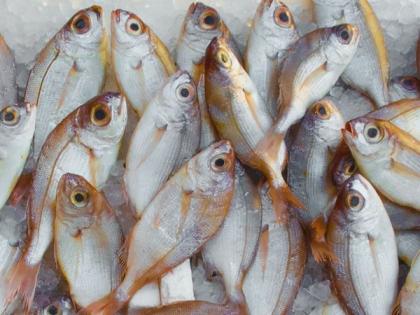Research: Small fish species could play big role in fight against malnutrition
By ANI | Published: December 6, 2022 03:27 PM2022-12-06T15:27:24+5:302022-12-06T21:00:18+5:30
According to new research, inexpensive little fish species captured in developing-country oceans and lakes could help address nutritional gaps ...

Research: Small fish species could play big role in fight against malnutrition
According to new research, inexpensive little fish species captured in developing-country oceans and lakes could help address nutritional gaps for undernourished individuals, particularly young children.
The study was published in Nature Food with the title "Small Pelagic Fish Supply Abundant and Affordable Micronutrients to Low- and Middle-Income Countries."
The researchers discovered that pelagic fish, which live in the upper levels of the open sea, such as herring, sardines, and anchovies, was the cheapest nutritious fish in 72 per cent of the countries.
They also discovered that focusing on small pelagic fish could help close nutrient gaps in Sub-Saharan Africa, where nutrient deficiencies are on the rise and children under the age of five consume only 38 per cent of the recommended seafood intake. These little fish are not only cheap and nutritious, but they are also abundant. Only 20 per cent of the current small pelagic fish catch could provide all children under the age of five with the recommended dietary fish intake.
"This study shows that small pelagic fish are relatively affordable, high-quality sources of nutrients," said Kathryn Fiorella, assistant professor in the Department of Public and Ecosystem Health in the College of Veterinary Medicine at Cornell University and a co-author of the study. "This is particularly true within nations where access to small pelagic fish can be a key tool in addressing malnutrition."
Small pelagic fish are high in selenium, omega-3 fatty acids, zinc, iron, and calcium and can cost up to twice as much as other types of fish. Cold-water animals that reside on the sea floor, such as cod and flounders, were likewise discovered to be the least inexpensive.
The researchers analysed capture, economic, and nutrient data from 2,348 fish species to determine the most inexpensive and nutritious fish in 39 low- and middle-income nations.
The study is part of the Illuminating Hidden Harvests initiative, in which an international team of researchers and fisheries scientists collected data on catch quantities, economic and nutrient data, and catch volumes for more than two-thirds of worldwide fisheries capture. The findings will aid in informing public health and fisheries strategies in areas where data on fish nutrition is limited.
James Robinson, a senior research associate at Lancaster University, led the study. Fiorella has attempted to examine the nutrients available in fish species in order to analyse how certain fish might be used to target micronutrient shortages. The study was informed by the fish nutrient data she gathered.
Overfishing, international global demand, and the animal feed and fish oil industries are all mentioned as risks to the availability of these little fish in the report. According to the study, small pelagic fisheries provide hidden or under-reported environmental, social, and economic advantages, making it increasingly vital to design sustainable and equitable strategies for managing small-scale fisheries.
( With inputs from ANI )
Disclaimer: This post has been auto-published from an agency feed without any modifications to the text and has not been reviewed by an editor
Open in app